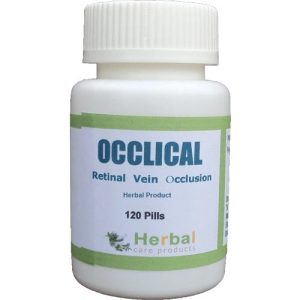No products in the cart.
Return To Shop 0 Cart $0.00 0
No products in the cart.
Return To Shop Shopping cart (0)
Subtotal: $0.00
Free shipping over 299$
New Treatment for Retinal Vein Occlusion offers hope for better vision
Retinal vein occlusion is a serious eye condition that can cause a range of vision problems, from blurred vision to complete vision loss. Until recently, treatment options for this condition were limited, leaving patients with few options. However, a new treatment for Retinal Vein Occlusion is now available and offers hope for those looking for improved vision. We’ll discuss the latest treatment for retinal vein occlusion and how it can help improve vision.

What is Retinal Vein Occlusion?
Retinal vein occlusion (RVO) is a type of eye condition that occurs when the veins in the retina become blocked. This blockage can cause reduced vision and even blindness if left untreated. The exact cause of RVO is unknown but it is believed to be caused by a combination of factors, such as aging, hypertension, diabetes, and genetics. When the veins in the retina become blocked, the retina is deprived of oxygen and nutrients, causing damage to the nerve cells in the eye. This damage can lead to swelling, fluid buildup, and hemorrhages in the retina. Symptoms of RVO can include blurry vision, blind spots, decreased color perception, and floaters. If left untreated, RVO can cause permanent vision loss.
How does the new treatment work?
The new treatment for retinal vein occlusion is a combination of laser treatment and injections of anti-VEGF medications. The laser treatment is used to break up the blockage in the retinal veins and release the excess fluid that has built up as a result of the occlusion. The anti-VEGF medications, meanwhile, are injected directly into the eye and help to reduce the swelling and inflammation that is associated with the occlusion.
The laser treatment typically involves directing an infrared light beam at the affected area. This beam breaks up the clot and helps to restore normal circulation in the retinal veins. The anti-VEGF medication helps to further reduce swelling and inflammation, making it easier for blood to flow freely through the retinal veins.
This treatment is often combined with other treatments, such as injection of corticosteroids or intraocular pressure control medications, depending on the type and severity of the occlusion. The combination of these treatments helps to reduce the risk of complications from the occlusion, such as glaucoma or permanent vision loss.
Overall, this new treatment for retinal vein occlusion can help to improve vision and reduce the risk of complications from the occlusion. It is important to consult with your doctor before starting any new treatments to make sure they are right for you.
What are the benefits of the new treatment?
The new treatment for retinal vein occlusion offers a number of advantages over traditional treatments. One of the most important is that it can offer improved vision in patients who suffer from this condition. The new treatment involves using a laser to reduce the amount of fluid present in the veins of the eye, which can help reduce pressure on the retina and improve vision. Additionally, the new treatment is non-invasive, which means that it does not require surgery or any other major procedure. It can also be completed quickly and easily in an outpatient setting. The improved vision can lead to improved quality of life for those affected by retinal vein occlusion. Finally, the cost of the treatment is generally much lower than traditional treatments, meaning that more people are able to access the care they need.
How does the new treatment compare to other treatments?
The new treatment for retinal vein occlusion is a promising alternative to existing treatments. Compared to laser photocoagulation, which is the most commonly used treatment for retinal vein occlusion, the new treatment has been shown to be more effective in improving vision and less likely to cause side effects. Additionally, the new treatment does not require the use of a laser, making it a safer option for those who may be at risk of damage from laser use.
The new treatment has also been compared to other treatments such as intravitreal injections, steroid injections, and anti-vascular endothelial growth factor therapy. In comparison, the new treatment has been found to be more effective than these treatments in terms of improving vision, with fewer side effects and a quicker recovery time.
Overall, the new treatment for retinal vein occlusion offers hope for those who are looking for a safe and effective way to improve their vision. With fewer risks and side effects, and better results than other treatments, this new approach could be a game-changer for those living with retinal vein occlusion.
Related Articles: Revolutionizing the Treatment of Retinal Vein Occlusion: Exploring New and Exciting Therapies
Are there any side effects of the new treatment?
The good news is that the new treatment for retinal vein occlusion is generally considered safe and has minimal risks and side effects. However, as with any medical procedure, there are potential risks to consider. The most common side effects associated with the new treatment include mild inflammation, redness or pain in the eyes. In rare cases, patients may experience decreased vision, blurred vision, or other vision changes. It is important to talk to your doctor about all of the risks associated with this treatment before making a decision. Your doctor can also provide you with more information on the potential side effects and discuss ways to minimize them.
More
More

